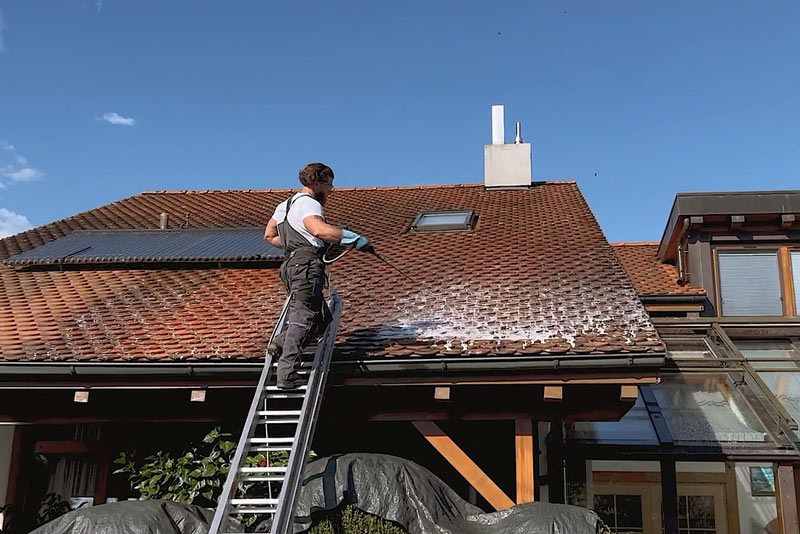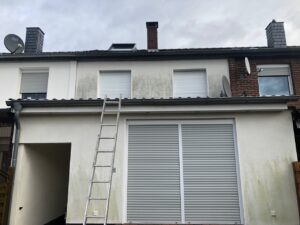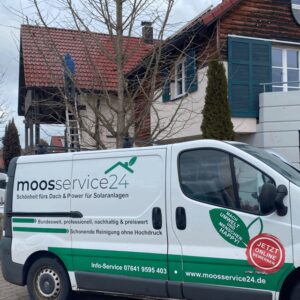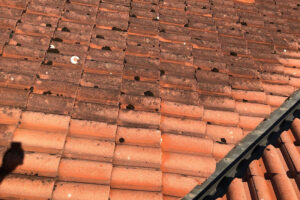Understanding the differences between low-pressure and high-pressure cleaning techniques
Well-informed decisions are always the better ones. We want to help you take that extra step. Roof maintenance is an essential aspect of homeownership, and a key part of it is keeping your roof clean and free from build-up. When it comes to roof cleaning, there are two main techniques: high-pressure and low-pressure. To ensure the longevity and integrity of your roof, it is important to understand the differences between these two methods.
In this comprehensive guide, we will explore the world of roof cleaning and uncover the secrets of high- and low-pressure techniques. We will examine the advantages and disadvantages of each method, the situations in which they are most suitable, and the potential risks involved. By the end of this article, you will know exactly which roof cleaning technique is best suited to your specific needs.
This will allow you to make an informed choice and keep your roof in pristine condition for years to come. Get ready to discover the secrets of effective roof cleaning and take control of your home maintenance like a pro.
The Importance of Roof Cleaning
A clean roof is not only aesthetically pleasing but also has a significant impact on the overall lifespan and integrity of the building structure. By removing dirt, moss, algae, and other deposits, you can prevent moisture from accumulating and damaging the roof.
In addition, clogged gutters and drains can lead to water build-up, which weakens the roof structure and can cause leaks.
Regular roof cleaning helps prevent these issues and can significantly extend the lifespan of your roof.

Tech Check: High Pressure vs. Low Pressure
The two main techniques for roof cleaning are high-pressure cleaning and low-pressure cleaning. Each method has its own advantages and disadvantages and is suitable for different situations. It is important to understand the differences between them in order to make the right decision for your roof.
Advantages & Disadvantages of High-Pressure Cleaning
High-pressure cleaning is an effective method for removing stubborn dirt and deposits from the roof.
The strong force of the water jet can clean quickly and thoroughly, and is particularly effective at removing moss and algae.
Another advantage of high-pressure cleaning is the time saved — because the water jet is so powerful, the cleaning can be completed in a shorter time.
However, high-pressure cleaning also carries risks.
The high pressure can damage roof tiles and cause leaks.
It is important to proceed with caution and adjust the water pressure accordingly to avoid damage and costly follow-up repairs.
Pros & Cons of Low Pressure
Low-pressure cleaning, also known as soft washing, is the gentler method of roof cleaning.
Instead of using high water pressure, a cleaning solution is applied to the roof, which dissolves dirt and deposits through a biological process.
The advantage of this method is that it is gentler on the roofing material and essentially eliminates the risk of damage.
However, low-pressure cleaning may not completely remove extremely stubborn dirt.
If you prefer to use environmentally friendly cleaning agents, the cleaning effect will develop over a longer period of time.
It is important to consider the type of dirt and the specific requirements of your roof in order to choose the right cleaning method.
Key Factors in Choosing a Technique
When choosing a roof cleaning technique, there are several factors to consider.
Roof covering material
Not all roofing materials are suitable for high-pressure cleaning. Some materials, such as slate, cedarwood, or thatch, can be damaged by the high pressure. Older asbestos-containing coverings can even pose a serious health risk when treated with high pressure.
When deciding on a cleaning method, it is important to consider the material of your roof and ensure that the chosen method is compatible with it.
Type of dirt
Depending on the type of dirt present on your roof, one method may be more effective than the other. For extremely stubborn moss and algae, high-pressure cleaning may be the best option. However, for normal or less stubborn dirt, low-pressure cleaning combined with manual pre-treatment is usually completely sufficient.
Relevant safety aspects
Safety is the top priority when it comes to roof cleaning. If you are unsure whether you can carry out the cleaning yourself, it is advisable to hire a professional cleaning service. They have the necessary equipment and experience to clean your valuable home roof safely and effectively.
Common misconceptions about high- and low-pressure roof cleaning
There are some common misconceptions about high- and low-pressure cleaning that should be clarified.
High pressure is always better
Many people mistakenly believe that high-pressure cleaning is the only effective method for roof cleaning.
In reality, low-pressure cleaning can often be just as effective while reducing the risk of damage.
Low pressure is too weak
Another common misconception is that low-pressure cleaning is not strong enough to remove stubborn dirt.
With the right cleaning agents and proper technique, however, low-pressure cleaning can be just as effective as high-pressure cleaning.
DIY tips for roof cleaning
If you decide to carry out the roof cleaning yourself, there are a few tips you should follow to achieve sufficiently good results.
Choose the right cleaning method
Based on the type of your roof covering, the condition of your roof and roof tiles, as well as the type of dirt, choose the appropriate cleaning method.
Buy the right cleaning products
Make sure you use the right cleaning products that are suitable for your roofing material. Read the instructions carefully and follow them exactly. Do not expose yourself or your property to any risk of injury.
Work carefully
Proceed carefully and avoid excessive pressure or aggressive cleaning techniques to prevent damage to the roof. Take care of yourself! Always be aware of the surroundings of your house to avoid endangering passers-by.
Safety tips for DIY
- Use safety equipment: Always wear non-slip shoes and a safety harness to reduce the risk of falls.
- Watch the weather conditions: Do not clean your roof in strong winds or rain, as this can compromise safety.
- Avoid contact with cleaning agents: Some cleaning products can be harmful, so it is important to wear protective clothing and avoid direct contact with the products.
Or opt for professional roof service
Roof cleaning without high pressure
We remove moss and green growth from your roof in a sustainable and gentle way
To the roof service
This wayConclusion and final thoughts
Choosing the right roof cleaning technique is crucial to ensuring the longevity and integrity of your roof. By understanding the differences between high- and low-pressure cleaning and considering the specific requirements of your roof, you can make an informed decision.
If you are unsure or have no experience with roof cleaning, we recommend hiring a professional cleaning service to achieve the best results for you and your property.
With regular roof cleaning, you can extend the lifespan of your roof and keep it in pristine condition. Make roof cleaning part of your home maintenance routine and enjoy the benefits of a clean and intact roof.




